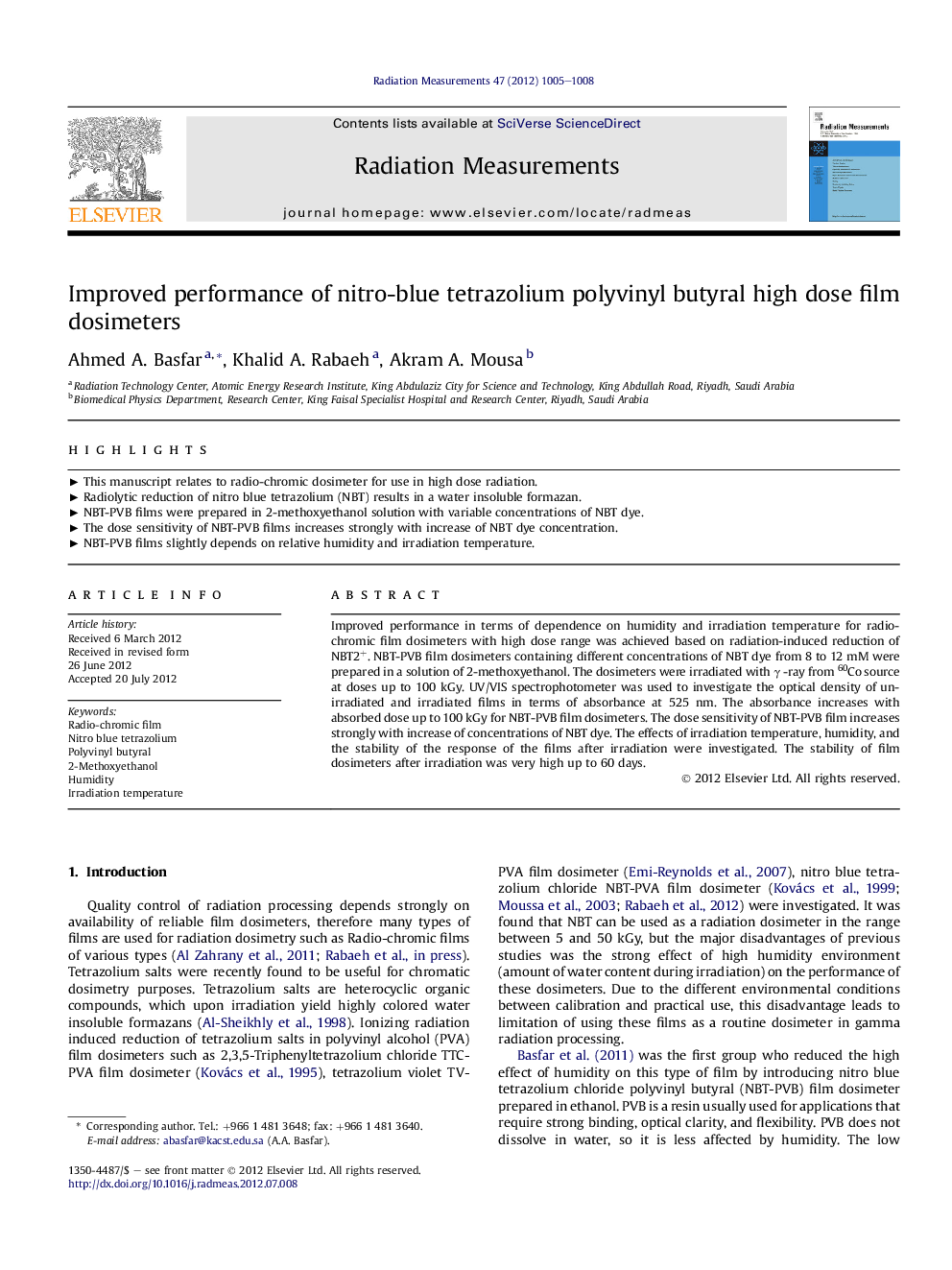| Article ID | Journal | Published Year | Pages | File Type |
|---|---|---|---|---|
| 1881473 | Radiation Measurements | 2012 | 4 Pages |
Improved performance in terms of dependence on humidity and irradiation temperature for radio-chromic film dosimeters with high dose range was achieved based on radiation-induced reduction of NBT2+. NBT-PVB film dosimeters containing different concentrations of NBT dye from 8 to 12 mM were prepared in a solution of 2-methoxyethanol. The dosimeters were irradiated with γγ -ray from 60Co source at doses up to 100 kGy. UV/VIS spectrophotometer was used to investigate the optical density of un-irradiated and irradiated films in terms of absorbance at 525 nm. The absorbance increases with absorbed dose up to 100 kGy for NBT-PVB film dosimeters. The dose sensitivity of NBT-PVB film increases strongly with increase of concentrations of NBT dye. The effects of irradiation temperature, humidity, and the stability of the response of the films after irradiation were investigated. The stability of film dosimeters after irradiation was very high up to 60 days.
► This manuscript relates to radio-chromic dosimeter for use in high dose radiation. ► Radiolytic reduction of nitro blue tetrazolium (NBT) results in a water insoluble formazan. ► NBT-PVB films were prepared in 2-methoxyethanol solution with variable concentrations of NBT dye. ► The dose sensitivity of NBT-PVB films increases strongly with increase of NBT dye concentration. ► NBT-PVB films slightly depends on relative humidity and irradiation temperature.
